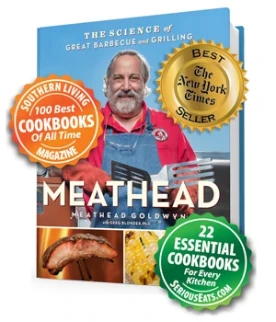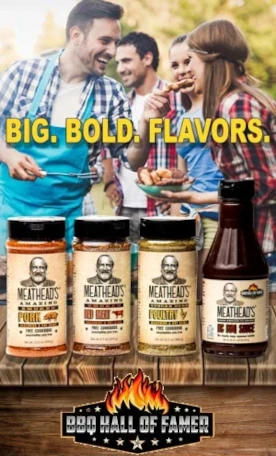Why 'version x'? because I suspect I'll be adding a few more to this thread - ultimate goal is a controllable vent like Jerod's.
So, in the spirit of "If it ain't broke, fix it till it is", I've decided that my PBC clearly needs an upper vent to create a more controllable temp (not just the hot and hope that we live with in the stock version - although I have no complaints!). My goal is to cut down the trailing temp descent that can happen as the cook progresses, that then require a big temp spike through cracking the lid to get the cooker right back up to the 275 - 310 cooking zone.
This first stage is really about keeping it stupidly simple, and seeing if it works. Knowing that simply removing a bar can affect the temp significantly, additional 3/4" holes at the bar level will probably work with most single meat cooks. (Lots o' meat - 5 briskets or whatever, will need something more engineered). I plan to drill 3, space them at middle back and middle each side as you look at the front lower vent. Nothing on the front edge.
Question arises about how to control the airflow through those holes and hence controlling the temp. 3 solutions I'm going to test:
1) Plugging one, two or three. It seems like the PBC only needs a marginal increase in airflow to get to a consistent higher temp, so maybe unplug each hole in turn as the cook progresses. How to plug the holes? Here is my best 'simplest' idea:

A wine cork. I'll coat it with some flax seed oil, but it shouldn't burn (temp won't be high enough, and cork can't maintain a flame to burn itself). (apologies for the pic angle. For demonstration purposes, I'm using the existing bar holes). Finally, if it does burn, I'll open some more wine - problem solved and situation improved.
2) How about more control for each vent hole: 2 Simple ideas:

The carved cork. Chop down one the chopping block a couple of times and you've got a smaller hole. Took about 5 seconds. (and another bottle of wine! Engineering is one hell of a career choice if you ask me.)

The round 1" magnet. This can just slid up and down to partially cover the hole. 6 were $2? at lowes. Magnets fail with higher temps, so we'll see how this lasts. The curvature of the barrel obviously affects the seal, but the gap is so small I fully expect a little bit of grease build up will fill in the gap.
So with the two finer adjustment ideas, again I think it would work for adjusting as the cook progresses, probably not necessary for the first hour or tow unless a lot of meat is used or a higher temp required.
Anyway. That's the plan. Wish me luck - I'll post the results!
Matt
So, in the spirit of "If it ain't broke, fix it till it is", I've decided that my PBC clearly needs an upper vent to create a more controllable temp (not just the hot and hope that we live with in the stock version - although I have no complaints!). My goal is to cut down the trailing temp descent that can happen as the cook progresses, that then require a big temp spike through cracking the lid to get the cooker right back up to the 275 - 310 cooking zone.
This first stage is really about keeping it stupidly simple, and seeing if it works. Knowing that simply removing a bar can affect the temp significantly, additional 3/4" holes at the bar level will probably work with most single meat cooks. (Lots o' meat - 5 briskets or whatever, will need something more engineered). I plan to drill 3, space them at middle back and middle each side as you look at the front lower vent. Nothing on the front edge.
Question arises about how to control the airflow through those holes and hence controlling the temp. 3 solutions I'm going to test:
1) Plugging one, two or three. It seems like the PBC only needs a marginal increase in airflow to get to a consistent higher temp, so maybe unplug each hole in turn as the cook progresses. How to plug the holes? Here is my best 'simplest' idea:
A wine cork. I'll coat it with some flax seed oil, but it shouldn't burn (temp won't be high enough, and cork can't maintain a flame to burn itself). (apologies for the pic angle. For demonstration purposes, I'm using the existing bar holes). Finally, if it does burn, I'll open some more wine - problem solved and situation improved.
2) How about more control for each vent hole: 2 Simple ideas:
The carved cork. Chop down one the chopping block a couple of times and you've got a smaller hole. Took about 5 seconds. (and another bottle of wine! Engineering is one hell of a career choice if you ask me.)
The round 1" magnet. This can just slid up and down to partially cover the hole. 6 were $2? at lowes. Magnets fail with higher temps, so we'll see how this lasts. The curvature of the barrel obviously affects the seal, but the gap is so small I fully expect a little bit of grease build up will fill in the gap.
So with the two finer adjustment ideas, again I think it would work for adjusting as the cook progresses, probably not necessary for the first hour or tow unless a lot of meat is used or a higher temp required.
Anyway. That's the plan. Wish me luck - I'll post the results!
Matt










Comment